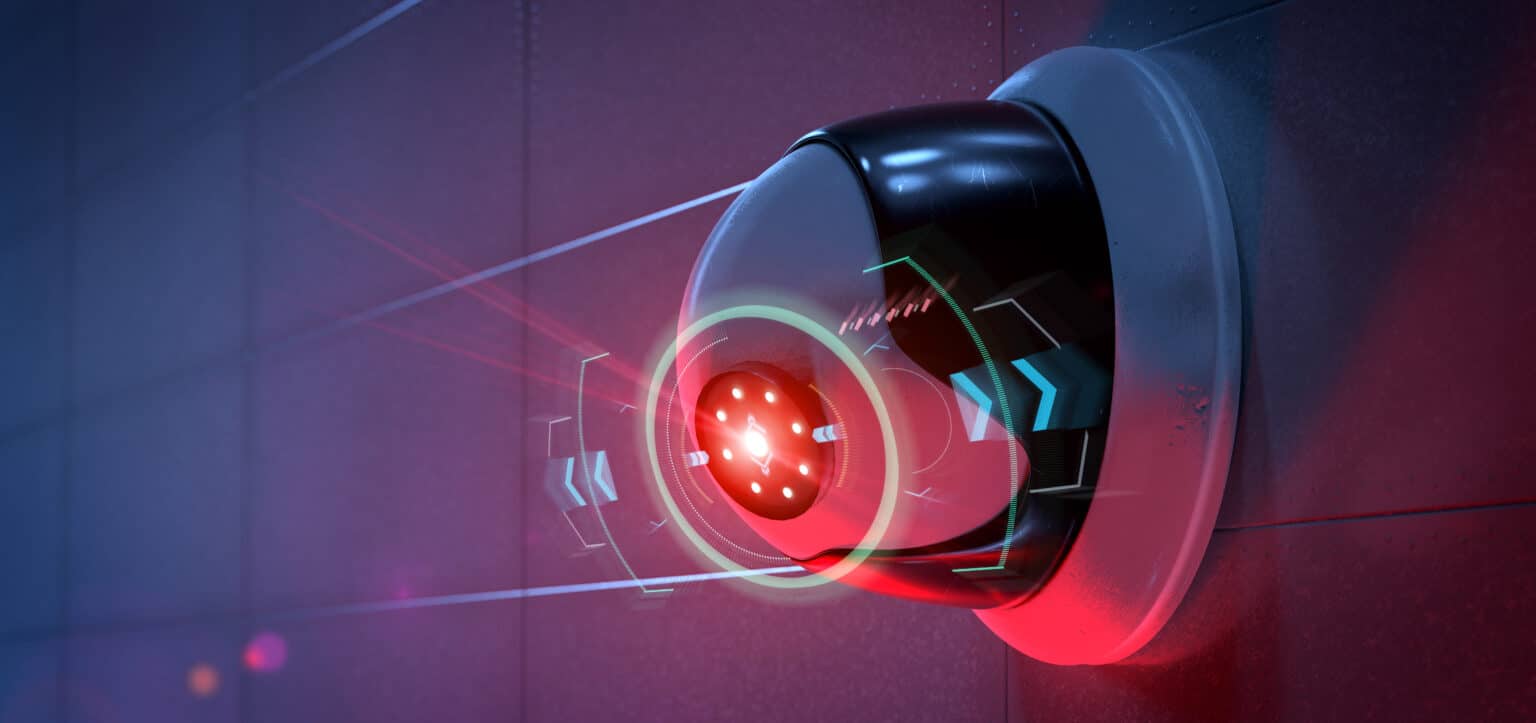EXCLUSIVE: Artificial intelligence continues to deliver genuine benefits


Victoria Rees
Share this content
Aaron Saks, Senior Technical Marketing and Training Manager at Hanwha Techwin explores the advantages of artificial intelligence (AI) in surveillance across a wide range of markets.
AI is a powerful business tool and when combined with intelligent analytics, security professionals can be better equipped to design and build the safest and most efficient surveillance environments.
Video surveillance technology has changed dramatically over the last few years with recent breakthroughs in imaging. Network video surveillance systems are also advancing from simple monitoring devices to comprehensive solutions that can be applied in every vertical industry and market sector.
The driving force is AI technology integrated with systems at every level, a trend that is expected to see unlimited growth. The data generated by AI-driven cameras creates meaningful business intelligence to help organizations gain a better understanding of their customers and their operations.
AI-powered security “smart” cameras are usually defined as any specialized network internet protocol (IP) cameras that perform advanced analytical functions such as vehicle detection, person detection, face detection, traffic counting, people counting and license plate recognition (LPR).
The security and surveillance industry will continue to see rapidly growing deployments of “smart” devices that combine AI and deep learning algorithms to conduct advanced targeted searches, enable effective forensic searches, enhance operational efficiency and minimize storage and bandwidth.
Industry research supports this trend; according to the “AI Surveillance Camera Market Research Report,” the global AI surveillance camera market size was valued at $4702.40 million in 2021 and is projected to reach $16750.00 million by 2028, reaching an annual growth rate of 19.90%.
AI at the edge
The role of onboard analytics will continue to expand as users combine edge computing and AI to achieve enhanced monitoring and search efficiency. The use of edge AI, especially with analytics based on deep learning algorithms, can be a key element in a range of smart surveillance applications. These include object detection and classification as well as the collection of attributes in the form of metadata – all while reducing latency and system bandwidth burdens, enabling real-time data gathering and situational monitoring.
AI and edge computing will continue to improve the efficiency and effectiveness of network video surveillance systems, applying analytics (object, loitering, virtual line and area crossing detection to name a few) to monitor every type of area or situation.
Getting even smarter
Surveillance camera operators can easily get bombarded with too much information – and too many false event alarms – especially if they’re using conventional cameras equipped with pixel motion-based detection and analytics. AI and deep learning algorithms detect and classify distinct objects (people, vehicles, faces and license plates) while clearly distinguishing them from their environmental surroundings.
These smart cameras filter out irrelevant motion triggers to focus only on people, vehicles or other relevant objects and generate only the events users need to see for effective forensic searches and enhanced operational efficiency. As a result, they also minimize storage and bandwidth by not tracking and recording every type of object in motion.
AI in use across markets
AI and its diverse applications are impacting industries and helping companies enhance their operations while building for long-term growth.
Banking and financial institutions: beyond protecting and monitoring, surveillance and security solutions are increasingly incorporating onboard analytics delivering data that can drive intelligent business decisions and enhance data collection and analytics, especially for remote banking applications like drive-through lanes or ATM kiosks – while reducing latency and system bandwidth burdens and enabling real-time data gathering and situational monitoring.
Healthcare: hospitals are complementing their cameras’ security monitoring performance with intelligent AI-based audio/video analytics, resulting in targeted object detection and classification, which saves time for hospital security teams by speeding forensic searches. AI can help hospitals deal with issues like “dump and run” incidents.
A car may drive by an emergency room entrance in the early morning hours, “dump” off a body that’s the victim of a criminal activity and then speed away. With AI-based license plate recognition, they can simply plug in their search attributes – a male in a red shirt and blue pants, between 2:00 and 2:30 am – and get quick hits on people or objects that match those parameters.
Hospitals also keep building “watch lists” of people whose previous histories prohibit them from being on hospital grounds. Those individuals can be identified by their license plates while they are still in the parking garage and security teams can intercept them before they enter the facility. If they do get past the front doors, their movements can be tracked throughout the building.
Casinos: analytics help casino operators understand guest behavior patterns, determine the busiest and slowest times of the day, which games are more visited regularly, plus more. Managers may decide where to place staff depending on traffic. Digital imaging technology with AI capabilities helps with table monitoring and unwanted vehicles through license plate recognition. These advanced video analytics can be used as investigative tools in the event of a security incident, but they can also inform staff of a high-profile client arriving on the premises.
Schools: digital imaging surveillance technology using AI with onboard audio and video analytics can help school administrators get a better handle on access control and monitoring of hallways, classrooms and exterior parking lots. For example, knowing which doors visitors can access and exit the building from is important when placing cameras. Search data can also be shared with other educational facilities and some technologies can even identify certain unauthorized visitors prior to them gaining access.
These advanced video analytics can be used as investigative tools in the event of a security incident and alert security when someone is trying to gain access to the premise. Built-in analytics on cameras can also be used for people-counting to accurately track the volume of people entering or exiting a building, which helps building administration monitor their population on any given day against their attendance records.
Oil and gas: for added protection, oil and gas companies are now implementing advanced AI cameras with sophisticated onboard analytics that detect objects such as people or vehicles. It’s now possible to specify “what” crossed a virtual line and “who” is loitering. Adding sound classification provides even more data. This makes it possible for companies to collect actionable data in real time and resolve events and incidents quickly and effectively.
Public health and safety: COVID-related restrictions still exist in certain areas. During the height of the pandemic, a range of AI-based apps and technologies were commonly used by retail stores, restaurants, office buildings and other public spaces for a range of public health and safety applications.
Cameras with thermal imaging technology use deep learning and AI technology for fast detection of elevated body temperatures. The cameras’ edge-based AI algorithm ignores non-human heat sources to reduce the frequency of false alarms. When an above-normal temperature is detected, an alarm with a graphic display notifies operators so the identified person can be discreetly managed. Onboard license-free analytics are also included for use in forensic reviews.
Occupancy monitoring systems combines 4K camera resolution with edge-based AI video analytics to monitor building occupancy levels and provide retailers, houses of worship, museums, entertainment facilities, restaurants and more with highly accurate, real-time data on the number of people in a facility at any given time. This data can also be repurposed later for researching customer behaviors or shopping preferences. Through AI-based face mask detection, employees or visitors in any public space not following established policies can be accurately identified upon entering.
For find out more, visit www.hanwhasecurity.com.
This article was originally published in the January edition of Security Journal Americas. To read your FREE digital edition, click here.

Aaron Saks, MSIT is the Senior Technical Marketing & Training Manager at Hanwha Techwin America. His primary responsibilities include managing the development of training and certification programs for various user groups. Previously, Aaron was the Business Development Technical Manager at Samsung Techwin America. He holds a BS in Computer Cartography and Geography from the University of Maryland, College Park and an MS in Information Technology from the University of Maryland, University College.


